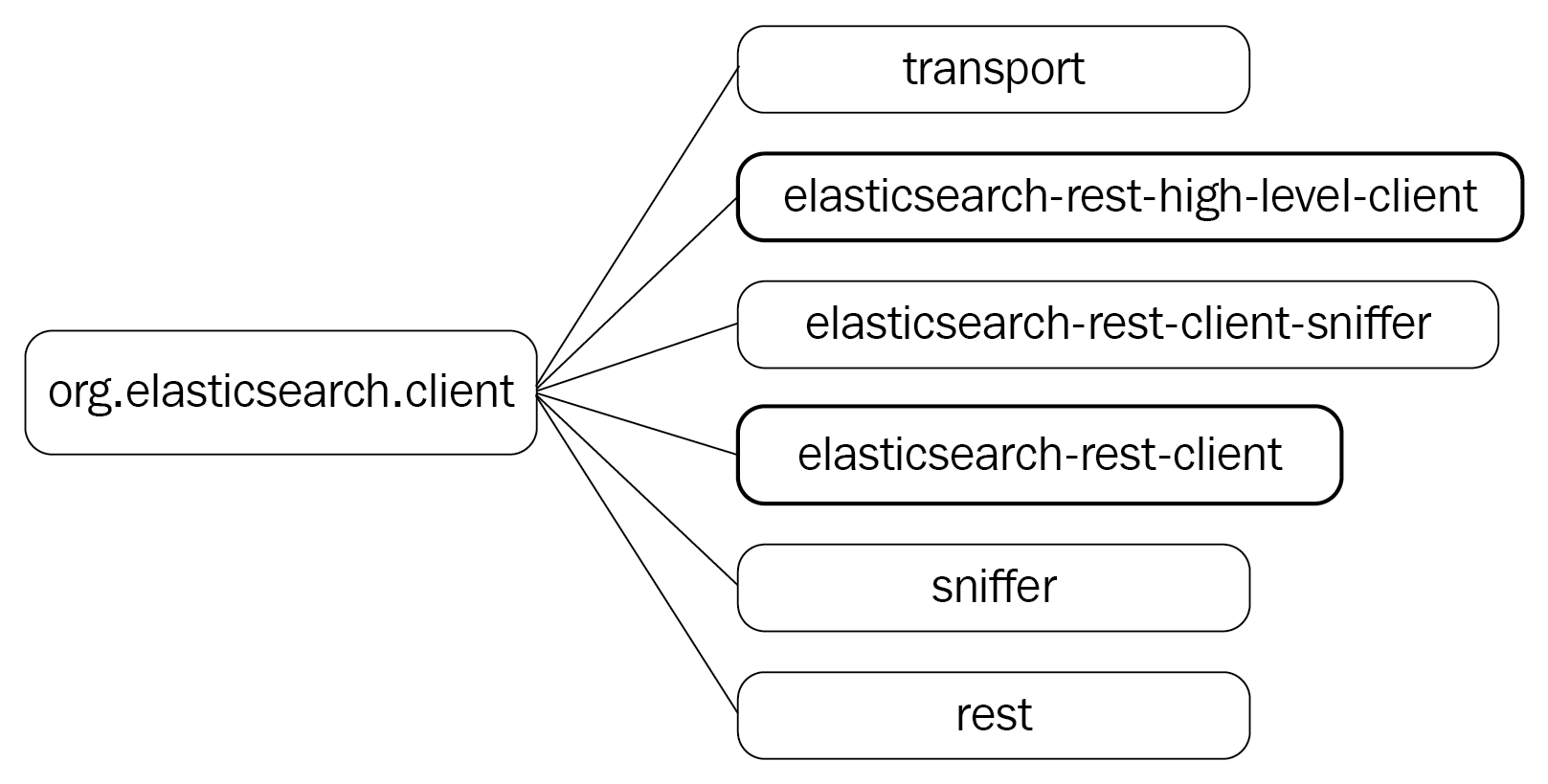You will recall that in the Talking to Elasticsearch section in Chapter 1, Overview of Elasticsearch 7, we discussed that Elasticsearch officially supports two protocols only. They are HTTP (the RESTful API) and native. When using the Java language, the transport client was the preferred method of the native protocol. However, transport clients such as the Java API are deprecated in Elasticsearch 7.0, and completely removed in 8.0. In short, we should use the Java high-level REST client. According to the Elasticsearch client in the Maven repository (available at https://search.maven.org/search?q=g:org.elasticsearch.client), we can sketch the hierarchy of the group ID and artifact ID, as shown in the following diagram:

Because the length of the chapter is limited, we are only focusing on two artifacts, elasticsearch-rest-high-level-client...



